south carolina
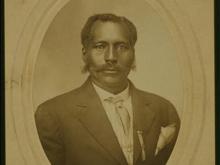
Black faith leaders and social justice advocates are commemorating the lynching of Anthony Crawford, a man who owned 427 acres in Abbeville, S.C., when he was killed on Oct. 21, 1916.
He had been jailed after a dispute with a white store owner over the price of cottonseed. He was released, but was abducted by a large mob of white men and lynched, his body riddled with bullets.

On Sept. 28, 6-year-old Jacob Hall was shot on the playground of Townville Elementary School in South Carolina. He died Oct. 1, after spending days on life support.
At his memorial service Oct. 5, Hall, who is said to have loved superheroes, was surrounded by superheroes of his own — family, friends, and classmates of Hall's arrived in capes and costumes to remember his life and to help reassure eachother that "the good will win," reports ABC News.

So there was a gloom and reverence with which I walked through the first three levels of the museum, and with which many of the people around me also seemed to travel. We were in the presence of ruins from days when black bodies were treated like cattle and felled like sugar cane crops. We were staring at the adornments of Ku Klux Klan members, at shards of glass from the 16th Street Baptist Church, and we were doing so only days after yet another police shooting of yet another unarmed black man. Death was in the air, and we were the bereaved.

Two students and a teacher were injured in a shooting at Townville Elementary School in Anderson, South Carolina on Sept. 28, reports WYFF News 4. The unnamed teenage suspect has been taken into custody. According to authorities, a death at a home three miles away from the school is connected to the shooting.

Something incredible happened there after the murders. Family members publicly forgave the killer. People filled the church the following Sunday — some sitting on the very spot where blood had to be cleaned from the floor – and proclaimed their commitment to compassion and forgiveness.
And the next Wednesday night, they did what they’d always done on Wednesday night. They held a Bible study. They welcomed anyone who was interested, and sat together in the same room where nine people had died and committed themselves to the Spirit of radical welcome. The topic of discussion that day: the power of love.
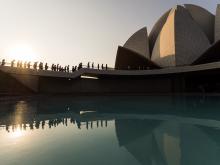
At a time when politics and corruption have become synonymous, how refreshing and impressive would it be to see, as the central platform of presidential candidates, a strategy towards healthy and integrative goals that allow our nation to “become glorious in spiritual degrees even as it has aspired to material degrees?”
Of course, the values Bahá’ís hold during their own elections – honesty, integrity, and considering one’s neighbor as oneself — are really universal values.
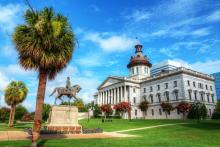
Evangelical advocates for immigration reform are concerned that proposed South Carolina legislation will make it more difficult for faith groups to help refugees in the Palmetto State. The bill, which passed a state Senate committee in late January, could make organizations that sponsor refugees liable if the new residents should later commit a terroristic act or other crime.
I have an idea for people who value their region's heritage so much that they continue to wave what they think is the Confederate flag (even though it is actually the battle flag of Northern Virginia).
I suggest that they volunteer to be slaves. For life.
Fact: The 19th-century Southern way of life would have been impossible without enslaved people.
Fact: The one thing that could bring back that romantic bygone era would be if, once again, some 39 percent of the population were enslaved (that's the average percentage of enslaved people in the Confederate states). But this time let's recognize that no one values personal liberty as much as Southerners. And let's take their word that the Confederate flag has nothing to do with racism. Let's encourage true Confederate patriots, especially white folks who are not racists, to volunteer to work in the fields from sunrise to sunset. There will be no pay, of course, and no bothersome education; but food, lodging, and two sets of work clothes per year will be provided. And the South will rise again.

I didn’t see the film Malcolm X in theaters. I waited to see it on video. Big mistake.
I watched it in my home, just off campus from University of Southern California, late at night when everyone else was sleeping. Another big mistake.
At the time I was living in a house with one other black person and a bunch of white and Asian friends. I was attending a mostly white school and a mostly white church and had attended a mostly white institute for urban transformation that was borne out of my church. Ironically, it was there that I was required to read The Autobiography of Malcolm X. But I never read the whole thing, only sections.
So, I sat in the dark living room, lit only by the television screen, and watched Denzel Washington bring Malcolm X to life … by myself. And there, in the dark, Malcolm’s words about Jesus hit me to the core.

The Rev. C.T. Vivian, who was central to the achievements of the civil rights movement of the 60s, said in an interview with me this week that the evil perpetrated at Emanuel AME Church in Charleston, S.C., was “the best thing that could have happened.”
Not the deaths of the innocent people, he says, but the evil act that was carried out in a house of worship made way for critical action that might not otherwise have happened. “It came out even better than anybody would have thought,” he said, “because we not only got the flag down, but more than that, we got rid of the great Southern symbols. If we handle it right, we have a good chance of getting a whole lot done more than we thought. Black ministers have to go to white ministers and say this is the day that we've been waiting for, the day when the public is really ready to have the war of yesterday forgotten.”
Vivian may well be right, but the incident made this writer wonder, yet again, about the whereabouts of God in the presence of oppression.
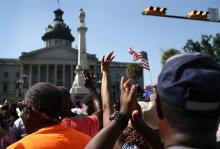
When the Confederate flag was removed from the South Carolina statehouse Friday morning, Gov. Nikki Haley spoke solemnly of the nine black churchgoers who were shot to death less than a month ago at Charleston’s Emanuel African Methodist Episcopal Church.
“We have all been struck by what was a tragedy we didn't think we would ever encounter,” Haley said of the horrifying massacre before she signed the bill with nine pens that will go to the families of the victims. “Nine amazing people that forever changed South Carolina's history."
Haley also referenced the “grace” shown by the nine families when they forgave the white gunman. She said their grace helped usher the state toward this long overdue decision. The assassinations at Emanuel AME, followed by forgiveness from the grieving families, were similarly cited by several South Carolina lawmakers as their reason for voting to remove the flag. Black Deaths Matter. That’s the painful and dangerous narrative being developed out of South Carolina. Only Black Deaths Matter. Our nation is capable of doing the right thing – such as taking down the Confederate flag in the year 2015, a flag that represents the racist, immoral, unconstitutional defense of slavery and Jim Crow – but only when black deaths happen and are met by a response deemed acceptable. Ever since this flag was raised in 1961 to send the message that South Carolina would not honor equal protection under the law, tens of thousands of small and large protests have not been enough to move the power brokers to take it down.

Today, at 4:00 p.m. EST, Governor Haley of South Carolina intends to sign a bill to take down the Confederate battle flag that is currently flying over the state capitol. The flag itself will be removed at 10:00 a.m. on Friday, and moved to a museum.
Calls for the removal of the Confederate flag, seen as a symbol of racism and oppression, have been buildingsince the murder of nine African-American men and women at Emmanuel AME in Charleston, S.C., last month. Dylann Roof, the accused murderer who is alledged to have been motivated by racial hate, has several pictures online posing with the flag as a symbol of white supremacy.
The flag itself increasingly been seen as a symbol of hate, even among traditionally conservative white southern Christians, with Russell Moore of the Southern Baptist Convention going so far as to say that “the cross and the Confederate flag cannot co-exist without one setting the other on fire.”
This decision to take down the flag made its way through a marjoity vote in the South Carolina House earlythis morning. The vote comes nearly two weeks after Bree Newsome, a Christian activist, took down the flag herself in an act of civil disobedience on June 27. For her, this was an act “not only in defiance of those who enslaved my ancestors in the southern United States, but also in defiance of the oppression that continues against black people globally in 2015.”

Although arson is blamed for at least three fires over the past two weeks at several predominantly black churches in Southern states, a blaze that destroyed Mount Zion African Methodist Episcopal church in South Carolina was not deliberately set, according to a federal source, the Associated Press reported July 1.
Churchgoers had feared the worst because the church in Greeleyville, S.C., was burned to the ground by the KKK in 1995. The latest fire broke out June 30 during a night of frequent storms and lightning strikes.

How could there have been people outside the South Carolina state house this weekend driving around in pick-up trucks with confederate flags attached to their beds, declaring "Heritage, not hate"? How could passerbys affirm these protests with shouts of "Long live the South"? How can people still deny that racism is deeply embedded in our culture? How can they not see that we must confront the harmful words and acts so that everyone may know they are beloved children of God and that their lives matter not just to God, but to their communities as well?

It is painfully true that in our time, in this year, in the United States, there is still no safe space for black people in America — even in their own churches. Racism is America’s original sin. It expresses itself explicitly and overtly in what we horribly saw last week in a black church, but racism continues on, implicitly and covertly, in American institutions and culture.
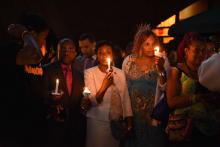
The sickness in our society is driven by the way we mistrust and pull away from one another; how we decide to care only about ourselves and our immediate families; the way we choose to serve only those who are like us – same race, ethnic background, sexual orientation, religion, political views.
Everyone else gets minimized and pushed away. We arm ourselves to protect our shrinking little space. We live like moles, wary of predators.
In guns we trust. In fear we live.

I walked down the newly plowed row with my grandpa, feeling the warm, red clay on the soles of my bare feet and listening to his stories and words of advice. I held a tomato plant in my hands, the rich, black potting soil falling off of the small, vulnerable roots, as he knelt and dug a place for it in the garden. “Hey,” he’d often start, “here's something my daddy told me when I was little. ‘God gave you two ears and one mouth because He wants you to listen twice as much as you speak. If you do that, you'll learn something. If you don't, you won't.’”
The memory of walking with my grandpa in his garden came back to me after I read about The Faith and Politics Institute's Civil Rights Pilgrimage in which more than 250 people (including 30 members of Congress) took a three-day tour of civil rights landmarks from Tuscaloosa to Birmingham to Montgomery to Selma. The participants in the pilgrimage got to hear the stories of the struggle for justice from the people who were in those places 50 years ago. I especially remember grandpa’s stories about his childhood on the family dairy farm in Greenville, S.C. in the 1920s. I liked to hear stories about the black folks who came and worked with him and his family. I heard hard work in his voice and saw struggle in his face when he talked about those times.
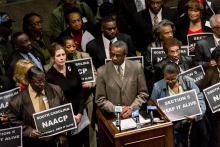
I was on the airplane, looking forward to reading Taylor Branch’s new book, The King Years: Historical Moments in the Civil Rights Movement. As I opened my Kindle, I realized that it offered large excerpts of Branch’s previous works, and was glad that while I have the other books in hard cover, I had these stories in my Kindle. But as I re-read some of the accounts, I realized that my 40-something-old self reacted differently than when I first read some of the accounts when I was 20-something. My younger self yearned to know: How did they organize? How did they deal with differing motives and different movements? And I yearned to believe that I, too, would have sacrificed my being for “The Movement.”
My late 40-something-old self read these words as a mother — as someone who understood the fury of the parents who were scared as their children sacrificed their very lives for justice’s sake.

When disgruntled congregations have left hierarchical denominations such as the Episcopal Church, they’ve often lost property battles as civil courts ruled buildings and land are not theirs to keep.
But outcomes could be different this year, court watchers say, as high-profile cases involving dozens of Episcopal congregations in South Carolina and Texas wind their way through state courts. That prospect has observers watching for insights that could shape legal strategies in other states and denominations.
Both cases involve conservative dioceses that voted to leave the Episcopal Church over homosexuality, among other issues. In South Carolina, congregations representing about 22,000 people are suing the Episcopal Church for control of real estate worth some $500 million and rights to the diocese’s identity. In Texas, the national Episcopal Church is suing about 60 breakaway congregations in the Fort Worth area for properties estimated to be worth more than $100 million.
